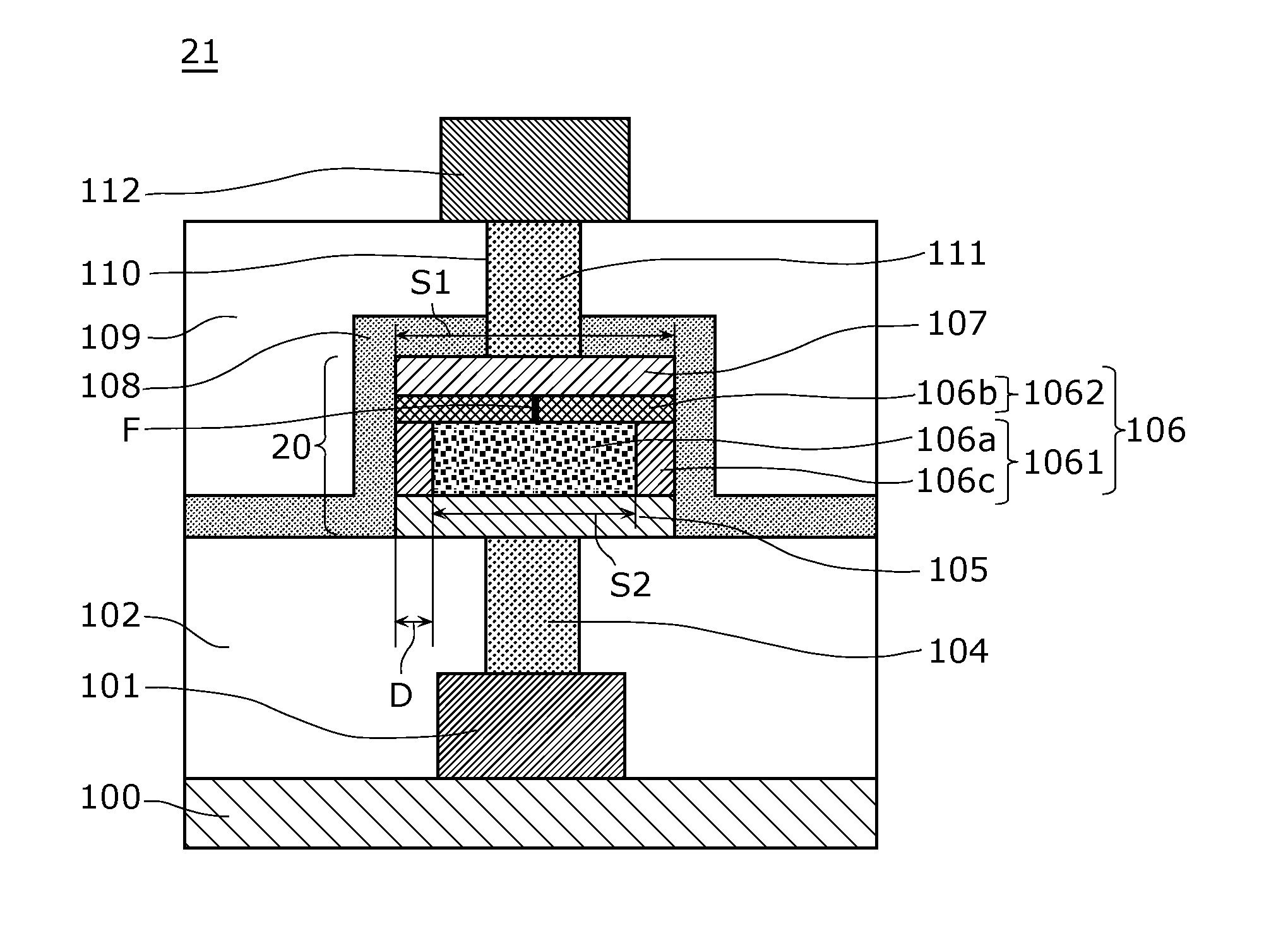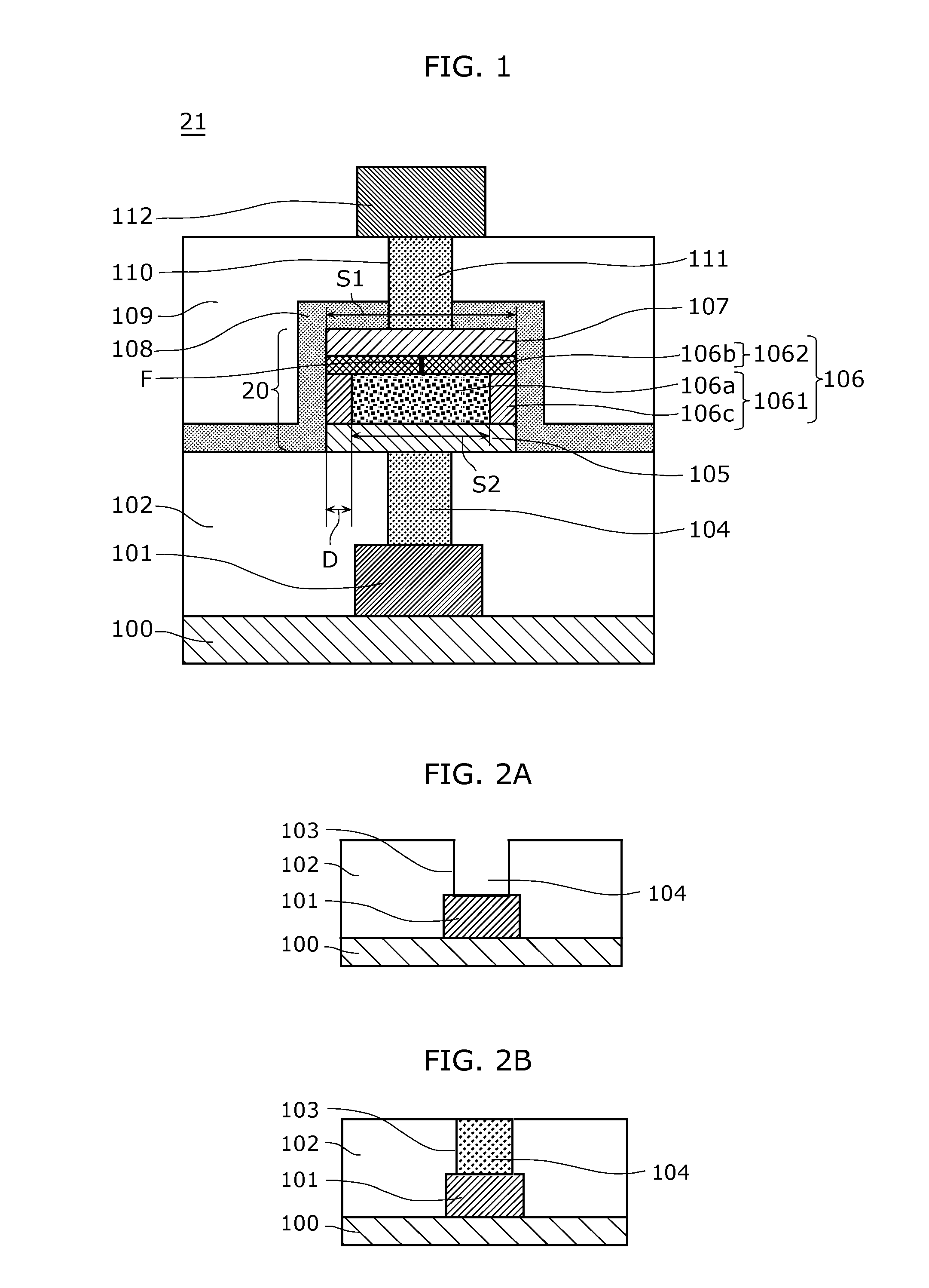Nonvolatile memory element, nonvolatile memory device, nonvolatile memory element manufacturing method, and nonvolatile memory device manufacturing method
a technology of nonvolatile memory and manufacturing method, which is applied in the direction of bulk negative resistance effect devices, semiconductor devices, electrical devices, etc., can solve the problem of limiting the miniaturization of existing flash memories using floating gates, and achieve the reduction of maximum area, increase current flow density, and reduce the leak current of variable resistance layers
- Summary
- Abstract
- Description
- Claims
- Application Information
AI Technical Summary
Benefits of technology
Problems solved by technology
Method used
Image
Examples
embodiment 1
Modification of Embodiment 1
[0187]A nonvolatile memory element of which endurance characteristics are enhanced is described as a nonvolatile memory element according to a modification of Embodiment 1.
[0188]FIG. 10 is a cross-sectional view illustrating an exemplary structure of a nonvolatile memory device 25 including a nonvolatile memory element 24 according to the modification of Embodiment 1.
[0189]In the nonvolatile memory element 24, a first metal oxide 106a included in a variable resistance layer 117 has a laminated structure of metal oxides having different oxygen deficiencies, and includes as layers a first region 106a1 connected to a first electrode 105 and a second region 106a connected to a second variable resistance layer 1062.
[0190]A second region 106a2 of the first metal oxide 106a has an oxygen deficiency lower than that of the first region 106a1 of the first metal oxide 106a and higher than that of a second metal oxide 106b.
[0191]In other words, the variable resistan...
embodiment 2
[0202]FIG. 12 is a cross-sectional view illustrating an exemplary structure of a nonvolatile memory device according to Embodiment 2 of the present invention. A nonvolatile memory element 30 according to this embodiment differs from the example illustrated in FIG. 3 in that a side wall protecting layer 118 covers only the sides of the first electrode 105, the variable resistance layer 106, and the second electrode 107. Stated differently, the nonvolatile memory element 30 illustrated in FIG. 12 has a side wall structure such that the side wall protecting layer 118 covers only the side wall portions of the nonvolatile memory element 30. In Embodiment 1, since it is necessary to process, by dry etching, the two-layered film of the second interlayer insulating layer 109 and the side wall protecting layer 108 having different selection ratios when the contact hole 110 is formed, there is a fear for an addition of an etching step, a stability of a contact resistance value, or the like. I...
PUM
| Property | Measurement | Unit |
|---|---|---|
| thickness | aaaaa | aaaaa |
| resistivity | aaaaa | aaaaa |
| thickness | aaaaa | aaaaa |
Abstract
Description
Claims
Application Information
 Login to View More
Login to View More - R&D
- Intellectual Property
- Life Sciences
- Materials
- Tech Scout
- Unparalleled Data Quality
- Higher Quality Content
- 60% Fewer Hallucinations
Browse by: Latest US Patents, China's latest patents, Technical Efficacy Thesaurus, Application Domain, Technology Topic, Popular Technical Reports.
© 2025 PatSnap. All rights reserved.Legal|Privacy policy|Modern Slavery Act Transparency Statement|Sitemap|About US| Contact US: help@patsnap.com



